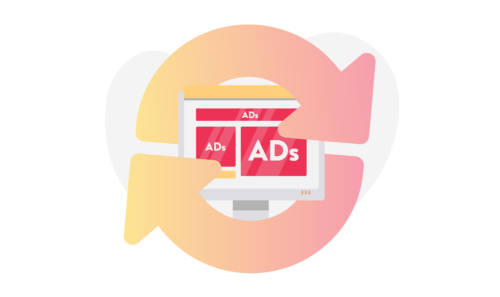The End of The Intrusive Ads Era?
Initiatives by market leaders, such as the one established at the last year’s Dmexco conference Coalition for Better Ads is a sign that we have reached the turning point, where the balance in the editor-user-advertiser relationship must be defined again.
Consumers do not close their eyes to advertising. A study conducted by ESI Media in the British market shows that 63% of users want brands to help them achieve their goals and 40% admits that advertising can be inspiring for them. However, the majority (67%) is tired of unrealistic promises.
According to the IAB report, as much as 78% of adblock software users in Poland accepts some selected forms of advertising activities, and 60% do not rule out the possibility of complete deactivation of adblock apps if advertising campaigns become less aggressive.
– It’s a vicious circle – says Marcin Ekiert, CEO of Yieldbird, an ad optimization company with a strong background in the programmatic ecosystem, working for a number of publishers in over 30 markets. – Users block ads, so to maintain the results of a campaign, ads become more intrusive and there are more of them. This makes other users install adblock software and messages become even pushier.
At last year’s Dmexco fair the leitmotif of discussion was the need to revise the concept on which is Internet advertising is currently based. There is a well-grounded doubt if aggressive exposure to advertising content translates into effectiveness.
Signs of change
– The most invasive ads, with moving X or pop-ups, are already difficult to find in premium sites. Nevertheless, rich media formats are still popular, including the worst perceived by users, such as self-activating audio formats or those covering the entire screen. However, we can see that even those publishers who are afraid to completely give them up, are becoming interested in less aggressive formats.
The most user-friendly approach we observe in countries such as the USA or Sweden. Surprisingly, even in the eastern markets where Yieldbird operates, for example in Russia and Belarus, websites are less intrusive in terms of advertising than in the Polish market, which is regarded as Western European – compares Marcin Ekiert. – Throughout the world, the responsibility to educate the market rests on the shoulders of large publishers.
Because of their negotiating position, it is they who can persuade advertisers and media houses to change.
How would the Internet look like if it happened? – Just use an American IP to enter portals such as the New York Times – suggests an expert from the company Yieldbird. – In the near future advertising space in websites will be less intrusive and fewer, but more expensive. Native forms will continue to develop.
The traditional banner does well.
Mobile enforces moderation
The growing number of mobile users, and consequently its huge advertising potential, enforce creativity in planning campaigns for this channel.
It also affects the form of communication. – The content arrangement on a phone makes the same ad on a mobile device much more distracting for the user than on a desktop.
A native advertisement is a good solution. Its appearance matches the style of the website and creation gives more emphasis on useful information rather than a purely marketing message. Therefore we reach more effectively people really interested in a product or service – explains Marcin Ekiert.
A survey by eMarketer shows that 56% of expenditure on digital advertising is currently spent on native advertising. As predicted, the upward trend will bring this value to 74% by 2020.
Although more than half of the users want a clear distinction between advertising and content, practice shows that native forms finally lead to a reduction in the amount of installed adblock software.
What actions will then prove to be effective in the fight for the consumer’s attention? – Careful and balanced targeting, even deeper data analysis, the value of creation itself and the actual offer brought to the user by a displayed ad – predicts Marcin Ekiert. – Hence less, but more carefully.






